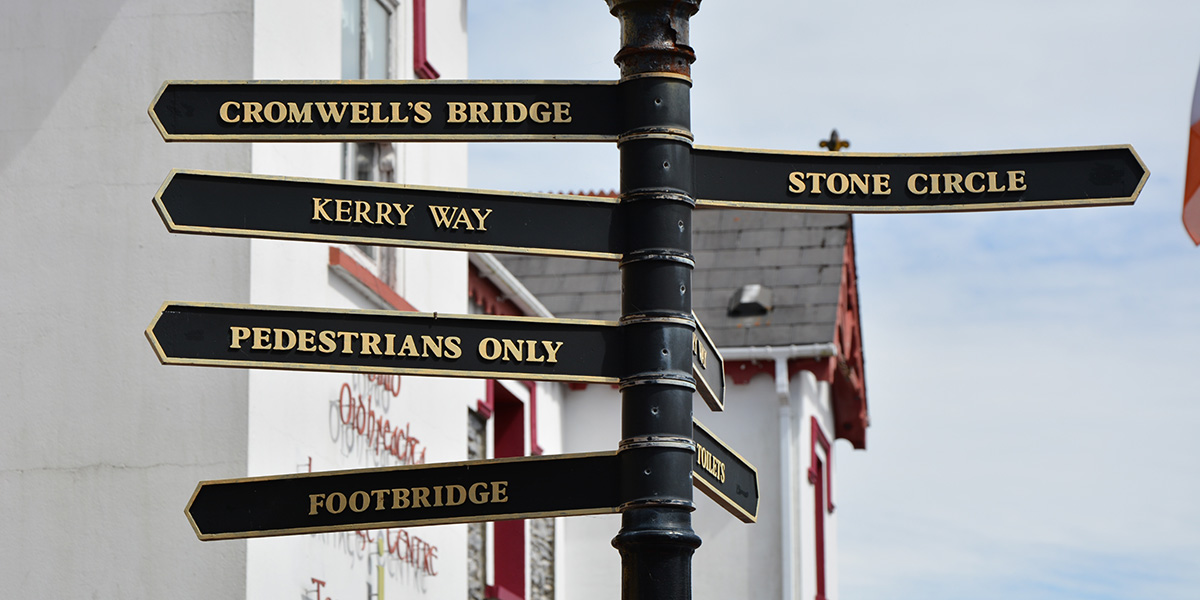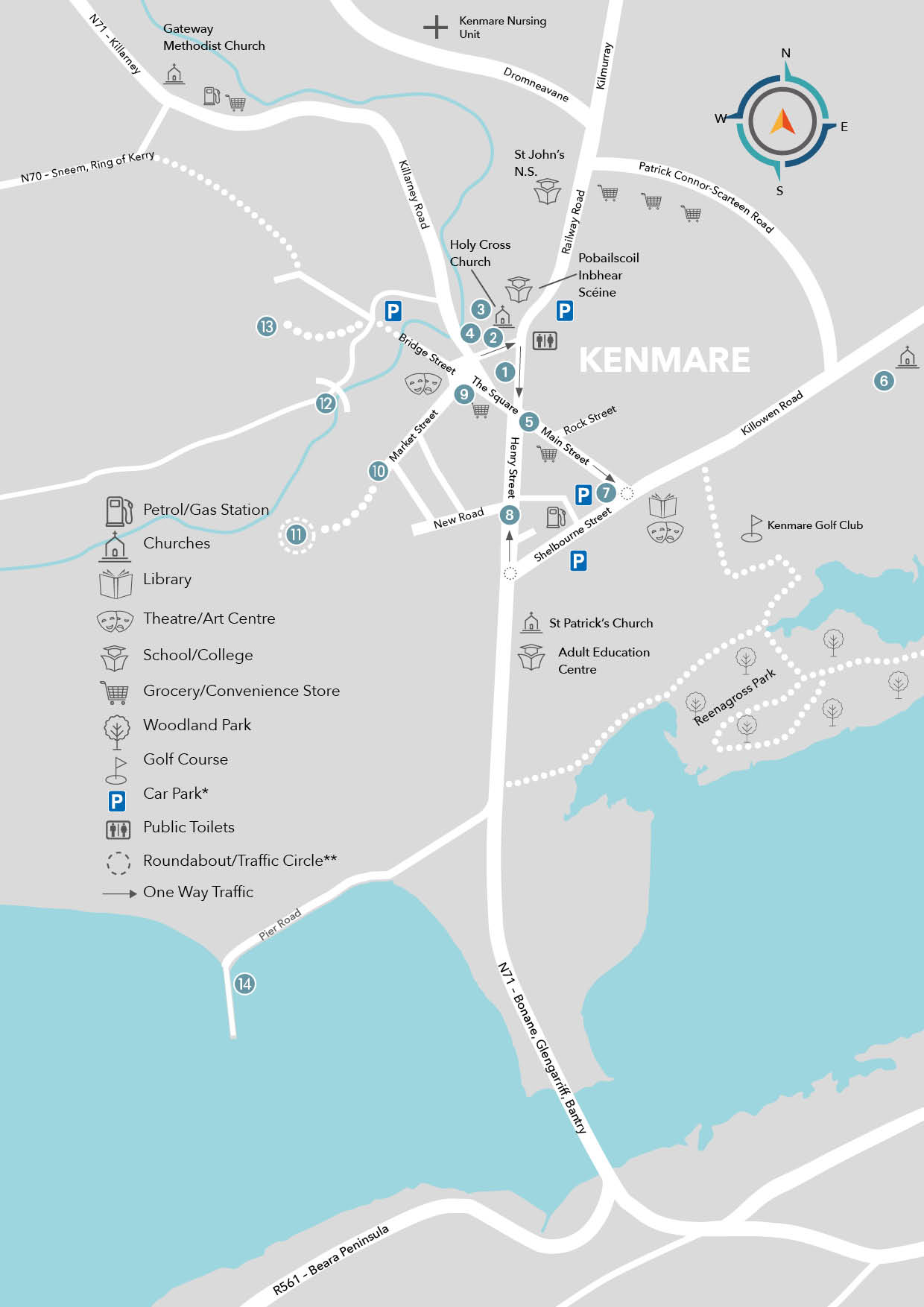
KENMARE HERITAGE TRAIL
1 THE GREEN
Fairs and markets used to be held in this space. The green was enclosed in the last century and remains the property of the Derreen Estate, formerly the Lansdowne Estate.
2 ROSE COTTAGE
Rose Cottage (Tigin na Rós) and the house adjacent to it formed the temporary home of Abbess Mary O’Hagan and six nuns from the poor Clare Convent when they first arrived in Kenmare.
3 HOLY CROSS CHURCH
Kenmare’s Holy Cross Church was consecrated in 1864. Its architect was Charles Hansom.
4 KENMARE POOR CLARE CONVENT
This building was a convent of the Sisters of Poor Clare from 1862 to 1993. The convent was the home of Sister Mary Frances Cusack, the Nun of Kenmare from 1862 until 1881. The convent is now closed.
5 MAIN STREET
Main Street was formerly named William Street in honour of the first Marquis of Lansdowne, William Pettty-Fitzmaurice who was raised in Lixnaw, Co Kerry. He was prime minister of England in 1781. The Marquis designed the plans for Kenmare upon which the town was developed in the 1770s.
6 KILLOWEN CHURCH
Killowen Church of Ireland dates to 1814 and was built in a Georgian Gothic Revival. Internationally renowned composer Ernest John Moeran (1894–1950) was buried here in 1950.
7 LANSDOWNE ARMS HOTEL
This hotel was built as an inn in the 1790s and was named after the Lansdowne family, the landlords of the estate and founders of Kenmare. In the 19th century the hotel benefitted from the growth of the Bantry–Killarney tourist route and was a stopping-off point for organised excursions.
8 HENRY STREET
The street was named in honour of the 3rd Marquis of Lansdowne (1780–1863), who oversaw a number of stages in the development of Kenmare.
9 THE OLD MARKET HOUSE
This three-storey classical-style building was designed by renowned English architect Sir Charles Barry for the 3rd Marquis of Lansdowne.
10 EMMET’S PLACE/MARKET STREET
This lane, formerly Pound Lane, was the location of the cattle pound. During the 19th century many of Kenmare’s tradesmen, such as leatherworkers, blacksmiths and tinsmiths, lived here. The change of name from Pound Lane to Emmet’s Place took place in the early 20th century and signifies the developing nationalist ethos of Kenmare during that period of time.
11 KENMARE STONE CIRCLE
This is the biggest stone circle of its type in the south-west of Ireland. In the centre of the circle is a type of burial monument known as a Boulder Burial.
12 CROMWELL’S BRIDGE
The bridge is thought to have been built in the 7th century by Franciscan monks to reach the Holy Well across the river. It is locally thought that the bridge’s name comes from the Irish word Crombhails, which means ‘moustache’ according to the bridge’s shape.
13 OUR LADY’S WELL
Our Lady’s Well is dedicated to the Blessed Virgin Mary. Our Lady’s Well is visited by devotees throughout the year but on the 15th August a special pilgrimage take place.
14 KENMARE PIER
Kenmare Pier sits in a 40km long inlet of sea that separates the Kerry peninsulas of Iveragh and Beara. The role of the pier was vital in Kenmare’s economic development in the 19th century.

